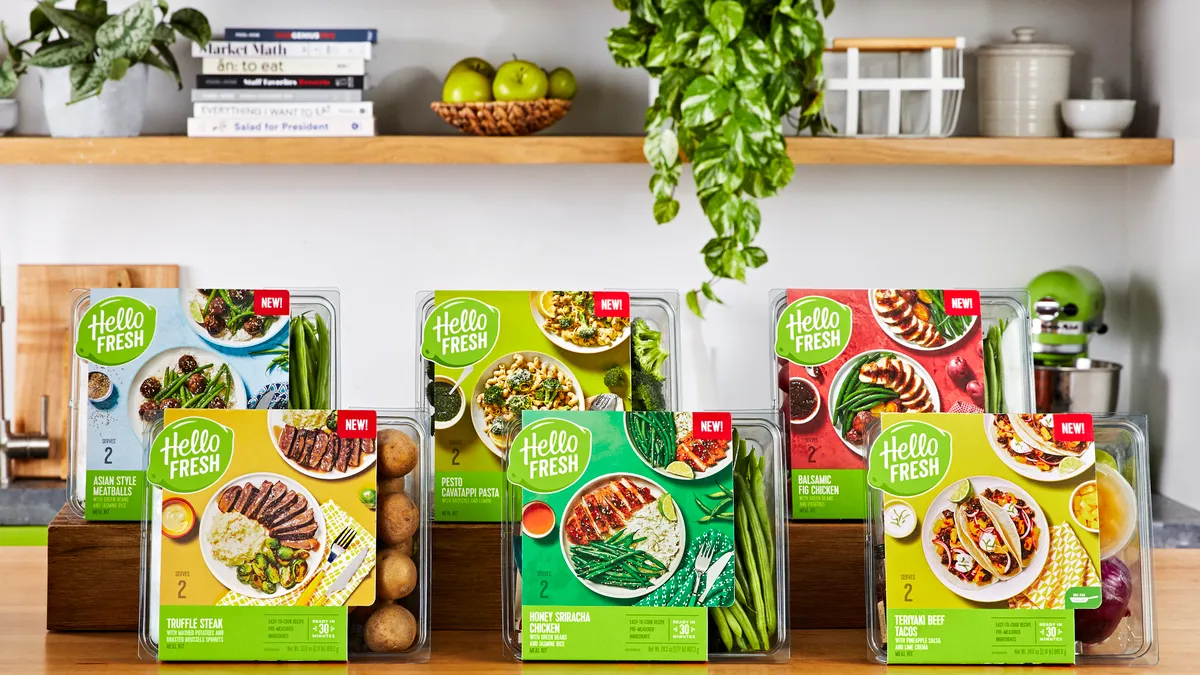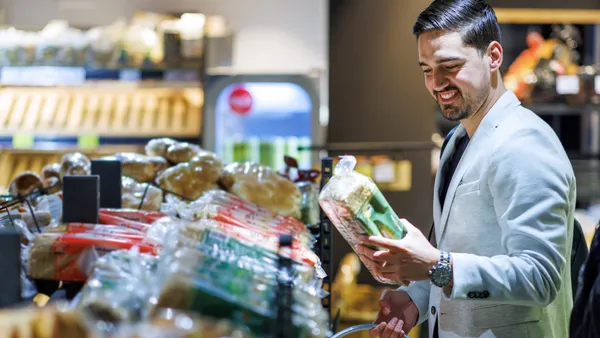Dive Brief:
- HelloFresh plans to cut carbon dioxide emissions from its operations around the world by 60% by 2022 as part of a series of sustainability goals the German meal kit company unveiled Wednesday.
- The company also intends to halve its food waste sent to landfills or incinerators per euro of revenue by 2022 compared to its level in 2019.
- HelloFresh is focusing on reducing its carbon footprint and using food more efficiently as its global customer base continues on an upward trajectory after recording strong growth in 2020.
Dive Insight:
With its sails billowing after a year of robust growth, HelloFresh is looking to improve its environmental profile as it scales up its operations.
HelloFresh, which operates in 14 countries, rapidly expanded its business in 2020. The meal kit firm saw sales in the United States, where it counts about half of its active customers, increase 99% in the fourth quarter, while full-year sales in the U.S. were up 102%, to $2.5 billion, the company reported earlier this month. HelloFresh had 2.6 million active U.S. customers in Q4, up 46% over the same period in 2019, and the company expects further growth in 2021.
In its sustainability report, HelloFresh pointed to its efforts to procure ingredients from local suppliers as a key way it has cut down on the consumption of energy from sources that generate carbon dioxide as a byproduct. The company said working with suppliers located near its facilities shrinks its transportation requirements, along with the number of buildings it needs to operate.
The company also noted that it strives to plan efficient delivery routes when shipping to customers, which it said yields benefits in terms of delivery speed and ingredient freshness in addition to saving energy.
In its report, HelloFresh also said it offset 100% of the direct carbon emissions caused by its production operations, deliveries, offices and corporate travel in 2020.
Another way HelloFresh is hoping to further cut down on the amount of carbon it emits is by moving toward renewable energy sources at its facilities. The company converted its distribution center in the Texas metropolitan area of Dallas-Fort Worth — one of 20 it operates around the world — to wind energy in late 2020. In June, HelloFresh took the same step at its distribution center in Swedesboro, New Jersey, and the meal kit supplier said it has entered contracts with wind energy suppliers for another two U.S. facilities that go into effect in 2021.
HelloFresh added that it has already made significant progress toward its goal of reducing the amount of food it obtains that goes unused. In 2020, the company donated 73% of the 5,000 metric tons of its excess food to communities where it operates. In addition, HelloFresh said it tries to use alternatives to landfills such as composting and processes that turn food into energy sources and fertilizer in certain markets, which it did not specify.
The company said it has been working with university researchers in the Netherlands to test a device that displays the number of days remaining before fresh salmon exceeds its shelf life by gauging storage temperatures in customers’ homes.
HelloFresh also said it is looking for ways to develop more environmentally friendly packaging for its products and noted that its efforts to source from local suppliers help reduce the amount of plastic it needs to use to transport goods. But while the company drew attention to its desire to use as little packaging as possible and make that material easy to recycle, it noted that it has to balance its efforts with the need to uphold the freshness, quality and safety of the meal kits it produces.
To counter that, Hello Fresh said it continues to work on a tool that helps it avoid shipping boxes with unused space by calculating the levels of secondary packaging and ice packs each kit needs.













